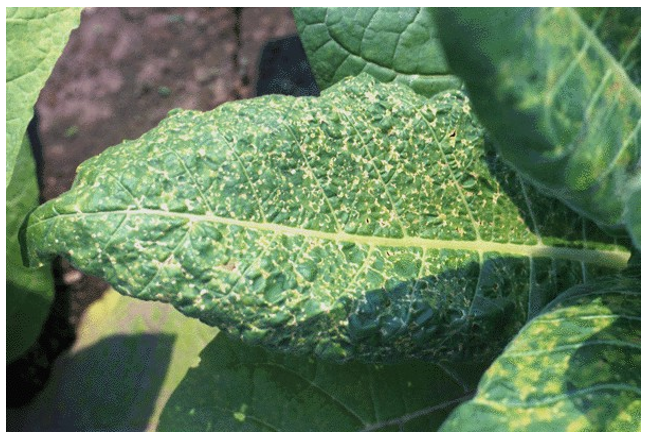- Courses
- GS Full Course 1 Year
- GS Full Course 2 Year
- GS Full Course 3 Year
- GS Full Course Till Selection
- Answer Alpha: Mains 2025 Mentorship
- MEP (Mains Enrichment Programme) Data, Facts
- Essay Target – 150+ Marks
- Online Program
- GS Recorded Course
- Polity
- Geography
- Economy
- Ancient, Medieval and Art & Culture AMAC
- Modern India, Post Independence & World History
- Environment
- Governance
- Science & Technology
- International Relations and Internal Security
- Disaster Management
- Ethics
- NCERT Current Affairs
- Indian Society and Social Issue
- NCERT- Science and Technology
- NCERT - Geography
- NCERT - Ancient History
- NCERT- World History
- NCERT Modern History
- CSAT
- 5 LAYERED ARJUNA Mentorship
- Public Administration Optional
- ABOUT US
- OUR TOPPERS
- TEST SERIES
- FREE STUDY MATERIAL
- VIDEOS
- CONTACT US
CMV and ToMV Virus
CMV and ToMV Virus
07-07-2023

Latest Context:
Recently, many Tomato growers in Maharashtra attribute crop failure to the Cucumber Mosaic Virus (CMV), while farmers in Karnataka and other South Indian states blame the Tomato Mosaic Virus (ToMV) for their crop failure.
About the Cucumber Mosaic Virus (CMV)
- CMV is a plant virus that affects a wide range of host plants, including cucumbers, tomatoes, peppers, and many other vegetable and ornamental plants.
- It is a member of the genus “Cucumovirus” and is one of the most economically important viruses that infects plants worldwide.
- CMV is transmitted by aphids, which are small insects that feed on plant sap. These aphids acquire the virus by feeding on infected plants and then transmit it to healthy plants when they feed on them.
- CMV can also be spread through contaminated tools, sap or plant debris.
- Symptoms of CMV infection can vary depending on the host plant, but common signs include mosaic patterns on leaves, yellowing, stunting, and distorted growth.
- Infected plants may also exhibit reduced yields and quality of fruits or flowers. CMV can cause significant damage to crops, leading to economic losses for farmers and gardeners.
Presently, there is no cure for CMV, once a plant is infected. Management strategies for CMV include:
- Prevention: Planting virus-resistant varieties can be effective in reducing the impact of CMV. These resistant varieties are bred to have natural resistance to the virus.
- Aphid control: Since aphids are the primary vectors of CMV, controlling aphid populations can help reduce the spread of the virus. This can be achieved through various methods, such as using insecticidal soaps, insecticides, or reflective mulches that repel aphids.
- Sanitation: Removing and destroying infected plants, as well as controlling weeds that can serve as alternative hosts for CMV, can help prevent the virus from spreading.
- Crop rotation: Rotating crops can help break the cycle of CMV by reducing the buildup of the virus in the soil. Avoid planting susceptible crops in the same area where CMV-infected plants were grown previously.
About the Tomato Mosaic Virus (ToMV)
- ToMV is a plant virus that primarily affects tomato plants but can also infect other plants in the Solanaceae family, such as peppers and potatoes.
- It is a member of the genus “Tobamovirus” and is one of the most common and economically significant viruses affecting tomato crops worldwide.
- ToMV is highly contagious and can be spread through direct contact with infected plants, contaminated tools, or by mechanical means such as touching infected plants and then healthy plants. The virus can also be transmitted through infected seeds, which can serve as a source of infection for new plantings.
- Symptoms of ToMV infection vary depending on the tomato variety and environmental conditions, but commonly include mosaic patterns of light and dark green on leaves, yellowing, leaf curling, stunting, and reduced fruit production.
- Infected fruits may also exhibit mottling, discoloration, and distorted shapes. These symptoms can severely affect the quality and marketability of tomato fruits.
To manage ToMV, several strategies can be implemented:
- Use disease-resistant tomato varieties: Planting resistant varieties is one of the most effective ways to prevent ToMV infection. Many tomato cultivars have been developed with resistance to specific strains of the virus, so choosing resistant varieties can greatly reduce the risk of infection.
- Sanitation and hygiene: Maintaining strict sanitation practices is crucial for preventing the spread of ToMV. This includes removing and destroying infected plants, regularly sanitizing tools and equipment, and washing hands and clothes after handling infected plants.
- Vector control: ToMV can be spreaded through aphids and other insects, as well as through mechanical means. Implementing measures to control aphid populations, such as using insecticides or employing physical barriers, can help reduce the transmission of the virus.
- Crop rotation: Rotating tomato crops with non-host plants can help break the disease cycle and reduce the buildup of ToMV in the soil. Avoid planting susceptible crops in areas where infected plants were previously grown.
- Seed treatment: If ToMV is a persistent problem in any area, treating tomato seeds with hot water or other approved seed treatments can help reduce the incidence of the virus in new plantings.
Similarity between CMV and ToMV Viruses are:
- Genus and family: CMV and ToMV are both the members of the Tobamovirus genus within the Bromoviridae family. They share similar characteristics in terms of their structure, genome organization, and replication mechanisms.
- Transmission: Both CMV and ToMV are transmitted through similar means. They can be spread through direct contact with infected plants, mechanical means (such as touching infected plants and then healthy plants), and via contaminated tools and equipment. Additionally, both viruses can also be transmitted through infected seeds.
- Host range: CMV and ToMV infect a wide range of host plants. While CMV affects various vegetable and ornamental plants, ToMV primarily infects tomato plants but can also affect other plants in the Solanaceae family, such as peppers and potatoes.
- Symptoms: Both viruses cause similar symptoms in infected plants. Mosaic patterns on leaves (light and dark green patches), yellowing, stunting, and reduced fruit production are common symptoms observed in plants infected with either CMV or ToMV. Infected fruits may exhibit mottling, discoloration, and distorted shapes.
- Economic impact: Both CMV and ToMV are economically significant viruses that can cause substantial damage to agricultural crops. They can reduce yields, affect the quality of harvested produce, and result in economic losses for farmers and growers.
Must Check: IAS Coaching Centre In Delhi



